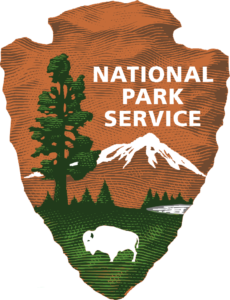 GRAND CANYON — Starting March 2, Grand Canyon National Park’s Cultural Demonstrator Program at Desert View will launch the ‘History Behind the Arts’ video series. This series will feature cultural demonstrators from the 11 traditionally associated tribes of Grand Canyon and will highlight the history of tribal crafts and personal interviews with artisans.
GRAND CANYON — Starting March 2, Grand Canyon National Park’s Cultural Demonstrator Program at Desert View will launch the ‘History Behind the Arts’ video series. This series will feature cultural demonstrators from the 11 traditionally associated tribes of Grand Canyon and will highlight the history of tribal crafts and personal interviews with artisans.
The Cultural Demonstration Program provides the opportunity for viewers to learn more about each tribe’s culture, their history, and the skills, knowledge, and efforts involved in creating each craft. Through symbols, patterns, and designs, native art of the Southwest displays the everyday life, beliefs, dreams, visions, and long-lasting traditions of tribes. The Cultural Demonstration Program at Grand Canyon began in 2014 and continues today with grant support from the Grand Canyon Conservancy.
“Grand Canyon has been a home and sacred space to 11 different tribal groups within the Southwest,” states Superintendent Ed Keable. “Native peoples and their ancestors have lived in this area since time immemorial. Grand Canyon is not just a National Park, it is a sacred place and home to many. The Cultural Demonstration program has transformed Desert View into a place to celebrate, share, and learn about inter-tribal cultural heritage.”
The 11 traditionally associated tribes of Grand Canyon include the following: Diné (Navajo Nation), Havasupai Tribe, Hualapai Tribe, Hopi Tribe, Yavapai-Apache Nation, Kaibab Band of Paiute Indians, Las Vegas Paiute Tribe, Moapa Band of Paiutes, Paiute Indian Tribes of Utah, San Juan Southern Paiute Tribe, and Pueblo of Zuni.
The videos will premiere on the Grand Canyon Facebook page and will be available afterward on the park’s YouTube channel and the NPS webpage. A full list of the video series schedule and additional information is available on the park’s Cultural Demonstrator Video Website.
Learn more about Grand Canyon’s Cultural Demonstrators at the Grand Canyon Conservancy Cultural Demonstration Series website.
Grand Canyon National Park, located in northern Arizona, encompasses 277 miles (446 km) of the Colorado River and adjacent uplands. One of the most spectacular examples of erosion anywhere in the world, Grand Canyon is unmatched in the incomparable vistas it offers visitors on the rim. Grand Canyon National Park is a World Heritage Site. The National Park Service cares for the special places saved by the American people so that all may experience our heritage.
